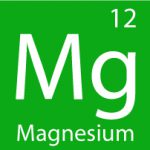So now you know all about your magnesium deficiency, it is finally time to do something about it!
Magnesium is so beneficial to your health. It is absolutely essential for normal function.
One of the first things to do when looking to increase your daily intake of magnesium is to first address your diet.
Increase your amount of magnesium rich foods from this list.
Rule out those factors that will deplete your body’s stores of magnesium faster.
These include decreasing your intake of carbonated beverages, caffeine, sugar and alcohol for a start.
For a full list of risk factors take a look here.
Then increase your dietary intake of magnesium towards the recommended daily dose of 320mg per day for women and 420mg per day for men. (NIH)
Unfortunately, due to the fact that magnesium has widely been removed from soils after generations of farming, the food we eat does not contain the large amounts that it once did. So ultimately, even a balanced diet that is high in the most magnesium rich foods will likely not be able to provide one with enough magnesium or minerals to satisfy the body’s needs.
This is also affected by the amount of processing of our food before it reaches our table. Sadly, all of the parts of grains that are removed and discarded during processing for example are the ones which contain the most minerals!
Some foods that are high in magnesium include:
-
 wholegrains such as whole wheat bread and brown rice
wholegrains such as whole wheat bread and brown rice -
dark leafy greens such as spinach and kale
-
nuts
-
beans
So, if getting the recommended daily amount of magnesium in your diet alone is so hard, what should you do?
Magnesium supplements come in many shapes and sizes so it is very important to pick the right one for you.

Forms of oral magnesium:
-
Magnesium Oxide
-
Magnesium Gluconate
-
Magnesium Chloride
-
Magnesium Citrate
-
Magnesium Tablets or Powder
-
Magnesium Liquid
Transdermal Magnesium
Transdermal Magnesium refers to the application of magnesium products directly onto the skin for absorption straight into the cells. This type of magnesium is a great weapon in the battle against deficiencies and is especially useful if you have a gastrointestinal intolerance to oral magnesium supplements i.e. diarrhoea.
This super-concentrated version of magnesium chloride is easily absorbed and taken directly to the cells to be used, fully bypassing the metabolisation and loss that occurs in the digestive system. So, you are getting more. And it is easy to apply and comes in the form of oils, lotions, bath salts or patches. The best thing is the that the skin automatically regulates the amount of magnesium it absorbs so it is completely safe to use.
-
Click on picture for more info Topical Magnesium Oil
-
Magnesium Bath Soak
-
Transdermal Magnesium Patches
Massaging transdermal magnesium directly onto sore and tired muscles is great for relieving aches and pains too.
Find out the best magnesium supplements here.
Anyone with the following risk factors should be taking a magnesium supplement:
-
chronic diseases such as diabetes
-
alcoholism
-
gut malabsorption problems such as Crohn’s disease
-
kidney disease
-
prescription medication
-
high blood pressure
-
a diet high in processed foods and sugars
-
physical stress such as surgery or mental trauma
-
calcium supplements
-
advanced age
If you are pregnant or breastfeeding, on medications or have a chronic liver or kidney disease please consult your doctor before commencing on magnesium therapy.
Click here for more information on the side effects of magnesium supplements.
Dr Carolyn Dean, author of the amazing book The Magnesium Miracle speaks below about the best ways to supplement magnesium:


